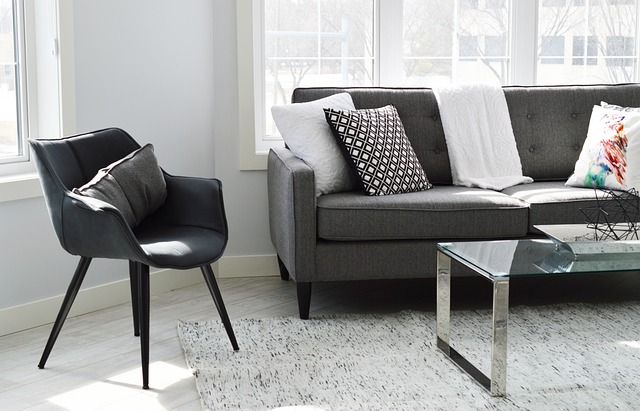When decorating your home, mixing and matching furniture styles can be incredibly exciting. This approach allows you to craft a dynamic and personalized space that truly reflects your unique taste. While combining different styles might seem daunting at first, it offers a chance to create a visually interesting and cohesive environment. The key is to start with a clear vision and gradually incorporate various elements, blending styles in a way that feels authentic and harmonious to you. This guide will walk you through the essentials of mixing and matching furniture styles, offering tips and tricks to help you achieve a cohesive and stylish look in your home.
Understanding Furniture Styles
Before diving into the art of mixing and matching, it’s essential to understand the different furniture styles available. Here’s a brief overview of some popular styles:
- Modern: Characterized by clean lines, minimalism, and functional design. Modern furniture often features materials like metal, glass, and sleek woods.
- Traditional: Known for its classic designs, rich woods, and intricate details. Traditional furniture often includes ornate carvings and plush fabrics.
- Industrial: Inspired by warehouses and factories, this style uses raw materials like exposed brick, metal, and reclaimed wood. It’s known for its rugged, utilitarian feel.
- Scandinavian: Emphasizes simplicity, functionality, and natural elements. Scandinavian furniture often includes light woods, neutral colors, and minimalist designs.
- Bohemian (Boho): Features eclectic, colorful, and relaxed designs. Boho furniture incorporates a mix of patterns, textures, and global influences.
- Mid-Century Modern: A throwback to the 1950s and 60s, this style includes clean lines, tapered legs, and a mix of organic and geometric shapes.
- Farmhouse: Focuses on rustic charm with distressed woods, cozy textiles, and a welcoming, homey feel.
Tips for Mixing and Matching Furniture Styles
- Find a Common Thread
To create a cohesive look, identify a common element that ties your furniture pieces together. This could be a color scheme, a material, or a specific design feature. For example, if you’re combining modern and industrial styles, you might use metal as a unifying element. A modern sofa with clean lines can be complemented by industrial-style metal side tables, creating a balanced contrast.
- Use Color to Your Advantage
Color is a powerful tool in furniture design. When mixing styles, choose a color palette that harmonizes with each other. Neutral tones like gray, beige, and white can serve as a backdrop, allowing different styles to stand out without clashing. You can also use accent colors to add pops of personality and tie disparate pieces together.
- Balance Proportions and Scale
Combining different styles can sometimes lead to an imbalance in proportions and scale. To prevent this, ensure that your furniture pieces are proportionate to each other and to the room’s size. For instance, pairing a large, ornate traditional armchair with a sleek, modern coffee table can work if the armchair is balanced with other elements in the room. Pay attention to the scale of each piece to create a harmonious look.
- Mix Textures and Materials
Mixing textures and materials can add depth and interest to your space. Combine different textures such as plush velvet with rustic wood, or smooth leather with rough metal. This not only enhances visual appeal but also adds a tactile element to your room. For example, a mid-century modern sofa with smooth lines can be beautifully contrasted with a bohemian woven rug.
- Create Focal Points
Establishing focal points in a room helps anchor different styles and creates a sense of harmony. A well-chosen focal point, such as a statement piece of art or a unique piece of furniture, can draw attention and set the tone for the rest of the room. Ensure that your focal point complements the various styles you’re mixing, acting as a bridge between different elements.
- Layer with Accessories
Accessories are an excellent way to tie different styles together and add personality to your space. Consider using throw pillows, rugs, and artwork to blend styles seamlessly. For example, a modern sofa can be softened with a boho-chic throw blanket and colorful cushions. Accessories can also help introduce new colors or patterns, creating a cohesive look.
- Pay Attention to Scale and Proportion
When combining different styles, ensure that the scale and proportion of your furniture pieces work well together. Avoid placing oversized pieces next to delicate ones, as this can create visual imbalance. Instead, strive for a mix of scales that complement each other. For example, a large, comfortable sectional can be balanced with smaller, more delicate accent chairs.
- Stay True to Your Personal Style
Ultimately, your home should reflect your personal taste and lifestyle. Don’t be afraid to experiment and trust your instincts. Mixing and matching furniture styles is about creating a space that feels right for you. If you love a particular piece of furniture, find a way to incorporate it into your design, even if it doesn’t fit neatly into a single style category.
Featured Image Source: https://cdn.pixabay.com/photo/2017/03/19/01/43/living-room-2155376_640.jpg






